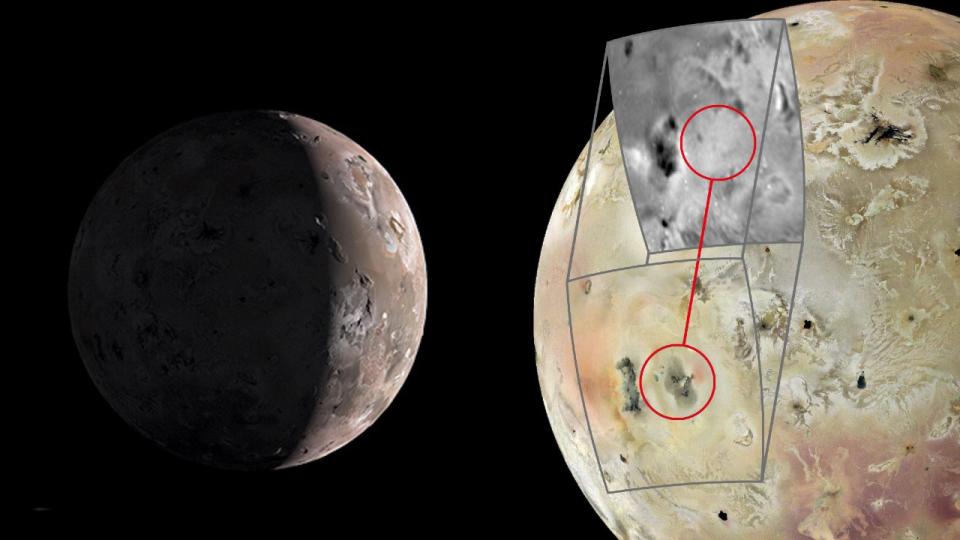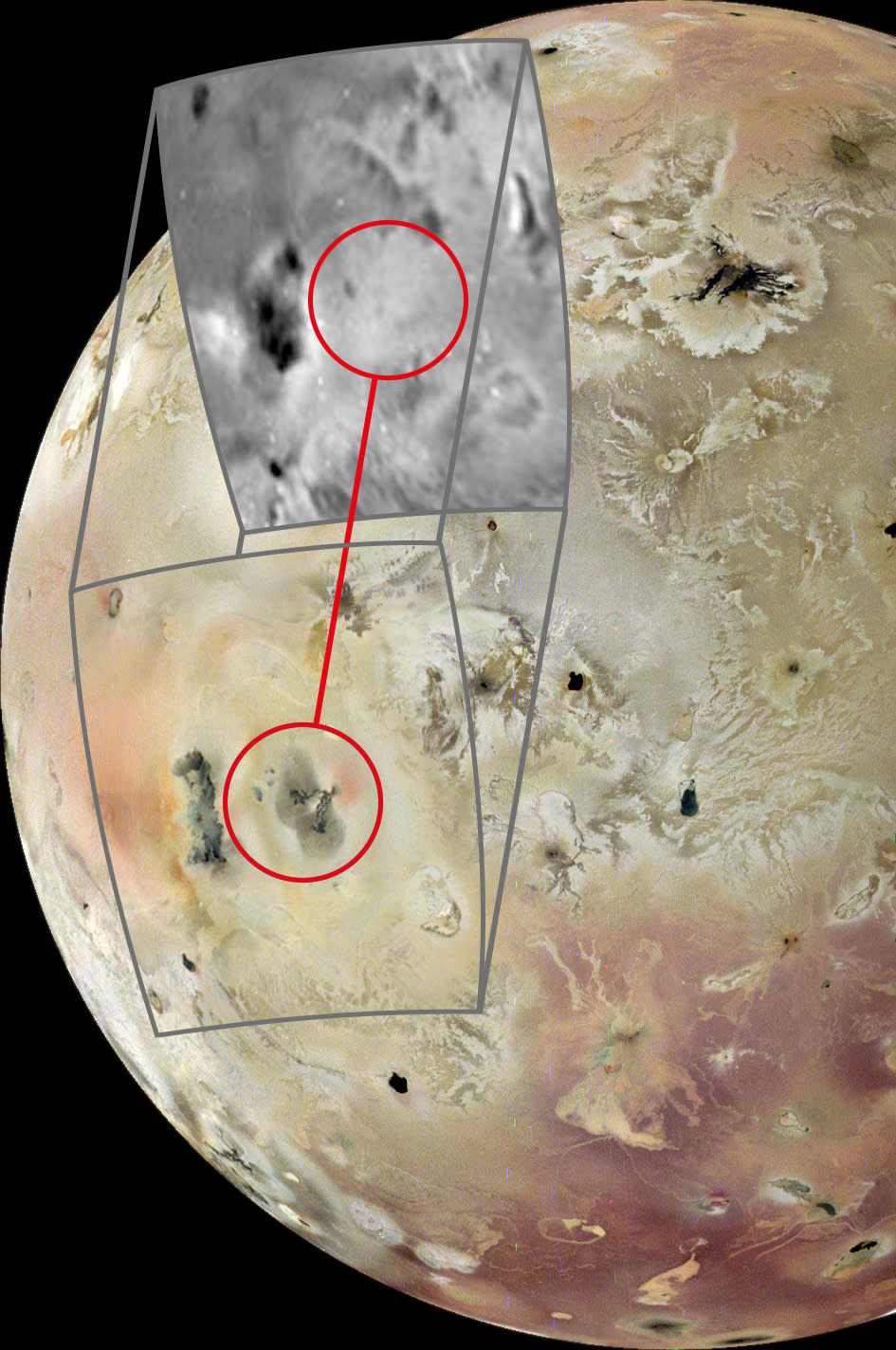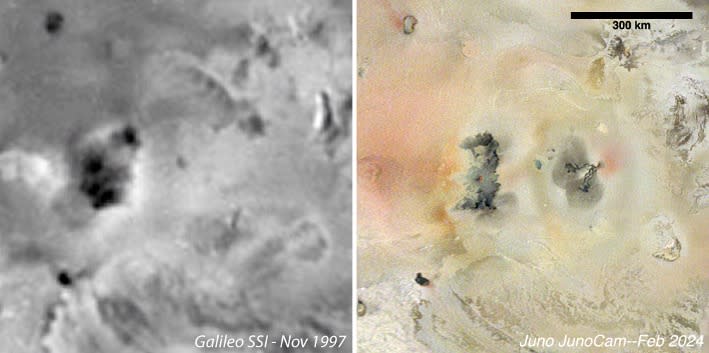When you buy through links on our articles, Future and its syndication partners may earn a commission.


Researchers have spotted a huge new active volcano on Jupiter’s moon Io by comparing images taken by two NASA missions more than a quarter of a century apart.
The images of the new volcano were taken by NASA’s Juno spacecraft and its JunoCam as it made a flyby of Io — the solar system’s most volcanic body — on Feb. 3 this year. The images were captured on the nightside of Io, illuminated only by reflected sunlight from Jupiter.
Comparison with Galileo spacecraft imagery of the same area, just south of Io’s equator, taken in November 1997, revealed that there was previously no volcanic feature in that location, meaning the vast feature and its after-effects have appeared at some point during the last 27 years.
The findings, which reinforce just how volcanically active Io is, were presented at the Europlanet Science Congress (EPSC) in Berlin this week.
“Our recent JunoCam images show many changes on Io, including this large, complicated volcanic feature that appears to have formed from nothing since 1997,” said Michael Ravine, Advanced Projects Manager at Malin Space Science Systems, Inc, which designed, developed and operates JunoCam for the NASA Juno Project, in a Europlanet statement.


The JunoCam image shows an area on the eastern side of the volcano stained red, thought to be sulfur first ejected into space and which then descended back onto Io’s surface. On the west, two dark streams of lava run about 62 miles (100 kilometers) in length and encompassed by two gray circular deposits.


JunoCam observed a total of nine plumes associated with active volcanic features on the moon, as well as other changes, such as new lava flows and other surface deposits, across three flybys in 2023 and 2024, according to the statement.
RELATED STORIES:
— NASA’s Juno probe sees active volcanic eruptions on Jupiter’s volcanic moon Io (images)
— Jupiter’s volcanic moon Io looks outstanding in these close flyby photos from NASA’s Juno probe
— NASA Juno spacecraft reveals Jupiter’s volcanic moon Io like never before in spectacular new images
Io, which is slightly larger than Earth’s moon, is caught between the colossal Jupiter and its fellow Galilean moons Europa and Ganymede. These gravitational forces tug on Io’s interior, generating frictional heat, and resulting in widespread volcanic activity across its surface. The eruptions are thought to eject molten sulfur and its compounds.
Juno launched in 2011 and reached the Jupiter system in 2016. The spacecraft completed its primary mission in July 2021 but is conducting an extended mission until September 2025. JunoCam data are published on the mission’s webpages.
